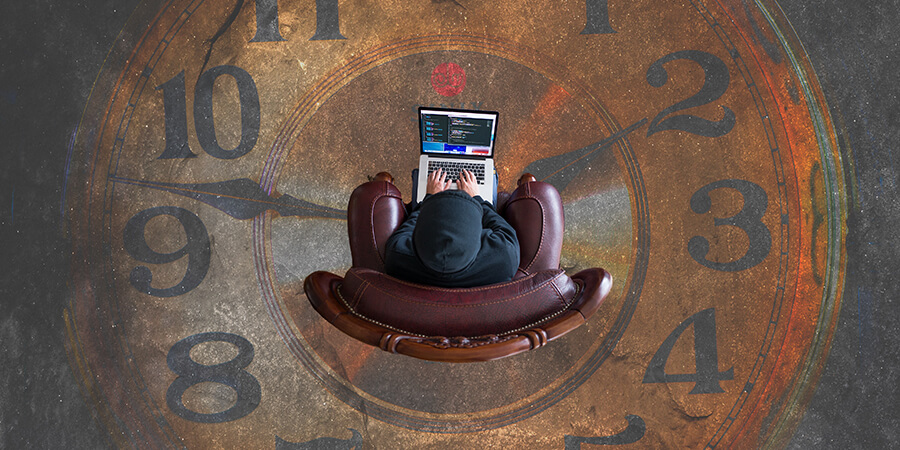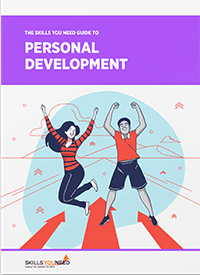5 Tips to Time Management
for Maximum Productivity
See also: Time Management Skills
Do you often find yourself struggling to stay in control of your workday? You start each day with big plans of what you'll accomplish but, before you know it, you become side tracked, and the day is nearly over with little progress made. If this sounds familiar, then you're in need of a good dose of time management.
Time management can help you break out of the vicious cycle of procrastination and distraction, so you can make the most of your day and reach maximum productivity. In this article, we discuss five tips that are essential for mastering the art of time management.
Read on to learn how you can get your workday back on track!

Tip 1: Conduct a Time Usage Audit
You can think of time the same way you think of money. When it comes to budgeting and managing your finances, you can't make informed decisions unless you know where the money is going in the first place. The same goes for time. When you know how much of your time is being spent on different tasks and activities, you're better equipped to make smarter decisions about where to invest it.
You can track your time manually by keeping a log of your activities throughout the day, or you can use time-tracking tools like Toggl or RescueTime for a more automated approach. Both options will give you clarity on exactly where your time is going, so you can identify areas or habits that may be hindering you from reaching your goals and make more conscious decisions going forward.
Tip 2: Pace Yourself and Set Realistic Expectations
The idea of "hustle culture" — sacrificing personal well-being for career success — has become increasingly popular in recent years. But this approach isn't sustainable. To stay productive and maintain your performance, you must learn to set boundaries and establish realistic expectations.
Think of it like doing a marathon over a sprint or choosing an MBA over an EMBA - the former requires you to be more consistent and take your time, while the latter offers immediate gratification but might leave you vulnerable to burnout.
It's the same with work: sure, you might be tempted to try and power through everything at once, but that doesn't mean you should. Take regular breaks to recharge your batteries, prioritize the highest-value tasks you do best or are uniquely qualified to handle, and delegate the rest (it's OK to ask for help).
And while you're at it, don't forget to be kind to yourself and give yourself grace when you don't meet all your goals set for the day. After all, you're only human.
Tip 3: Stay Away from Multitasking
If you've ever answered emails while in the middle of a Zoom call, checked social media during a presentation, or even just tried to send quick text messages while in a brainstorming session, you've experienced the downsides of multitasking first-hand. Why? Because contrary to popular belief, multitasking isn't a productivity hack.
A growing body of research suggests that trying to do too many things at once can actually interfere with your working memory, impair your decision-making abilities, and reduce your overall performance.
We all have limited cognitive bandwidth — the number of things our brain can process at once — and attempting to accomplish too much in a small timeframe will tire it out. You might delude yourself into believing that your brain is a supercomputer capable of achieving the impossible. But, in reality, when you're switching between tasks, your mental faculties are being harshly tested as they struggle to keep up with an array of cognitive demands.
So, accept that you can't be superhuman and learn to be realistic with how many tasks you can handle in one go. You'll be surprised at how much more productive you become once you commit to breaking the multitasking habit.
Tip 4: Begin your day with the hardest task
Distractions can be a productivity killer, and the more complex or tedious the task is, the easier it will be to wander off and procrastinate. To counteract your inner slacker, adopt Eat That Frog Method by Brian Tracy. Identify the most challenging task you need to get done and tackle it first before moving on to anything else. Once you've crossed off the hardest task from the list, everything else will seem like a piece of cake.
We're all guilty of pushing the things we don't like doing to the back of our minds, but that doesn't mean we should give in to our laziness. The Eat That Frog method forces you to confront the tasks we've been avoiding and get them out of the way — giving you a much-needed sense of accomplishment to set you up for a productive day.
Plus, scientists have found that some people's speed and accuracy at completing tasks are better in the morning, so why not take advantage of your peak performance hours and start your day with a bang?
Tip 5: Embrace the Power of Modern Tech
Technology has firmly entrenched itself into the fabric of our lives. From the digital morning clock that wakes you up to the apps you use to get food delivered to the social media platforms that keep you connected with the world, technology has become an inextricable part of our existence. The modern workplace is no exception.
These days, it's not unusual to have dozens of applications and platforms running in the background, helping you with your day-to-day job duties. And while it can certainly be a major source of distraction, tech can also be a powerful ally in helping you manage your time and take control of your workflow. Here are some tips for making the most of tech-fueled time management:
Get organized using task management apps:
Spreadsheets and post-it notes are a thing of the past. Today, task management apps are the go-to choice for busy professionals looking to keep track of their assignments and commitments.
These powerful tools help you break down large projects into smaller, more manageable tasks and offer a range of features, like task tracking and time logging. They also can send out automatic notifications when pending tasks are due and give you a holistic view of your progress. And if that weren't enough, many of these apps also have collaboration features, so you can share tasks with others and easily delegate responsibilities.
Integrate with smart calendars:
Your calendar should do more than just mark down your meetings and appointments. With the help of modern tech, your calendar can become an integrated hub for planning and tracking tasks.
Smart calendars pull info from all your devices and sync up with all your other accounts to bring your schedule into one place. They, then, give you automatic reminders and notifications of impending deadlines or important events and even help you create time blocks and re-prioritize tasks on the fly.
Synchronize your tech stack with workflow automation tools:
Juggling between multiple applications and platforms can eat into your workday. Hopping in and out of accounts, switching software, and manually entering data can leave you feeling disorganized and overwhelmed. The best way to minimize this tech chaos is to use workflow automation software. These tools enable you to increase your productivity by making it easy to put all your apps in communication with each other.
For example, let's say you use Asana for task management, but your company's stakeholders still prefer the classic elegance of spreadsheets to view reports. Now, you can either follow step-by-step instructions to export and import data between Asana and Google Sheets each time you make changes or simply use a workflow automation tool to sync the two in real-time and save yourself the hassle.
Employ QR codes to improve workplace efficiency:
You might be familiar with QR codes from restaurant menus or retail stores, but did you know they can also be used to improve workplace efficiency? These tiny codes can communicate a lot of information in one go and can be used to instantly share documents, links, and instructions with your employees or teammates. So instead of explaining tasks or sending out individual emails manually, you can put up a QR code and have your colleagues scan it to get the needed information.
Plus, QR codes are pretty easy to create and can even give you analytical insights into who, when, and how often the code was accessed, which brings us to its next major benefit: attendance workflow management. If your job description requires you to keep an eye on other employees' work hours, then QR codes can also be a great asset in helping you streamline and automate attendance mapping.
Further Reading from Skills You Need
The Skills You Need Guide to Personal Development
Learn how to set yourself effective personal goals and find the motivation you need to achieve them. This is the essence of personal development, a set of skills designed to help you reach your full potential, at work, in study and in your personal life.
The second edition of or bestselling eBook is ideal for anyone who wants to improve their skills and learning potential, and it is full of easy-to-follow, practical information.
Get the Most Out of Your Day
Managing your work hours is a crucial skill that, with practice, will help you get more accomplished and reach your goals with fewer headaches. Implement these time management tips into your workflow, and you'll be well on your way to dominating your day.

About the Author
Sam Klaas is a seasoned marketer and content creator with a background in B2B SAAS and product marketing. He specializes in creating growth-focused content for high-growth startups and is passionate about using the power of language to inspire action.

